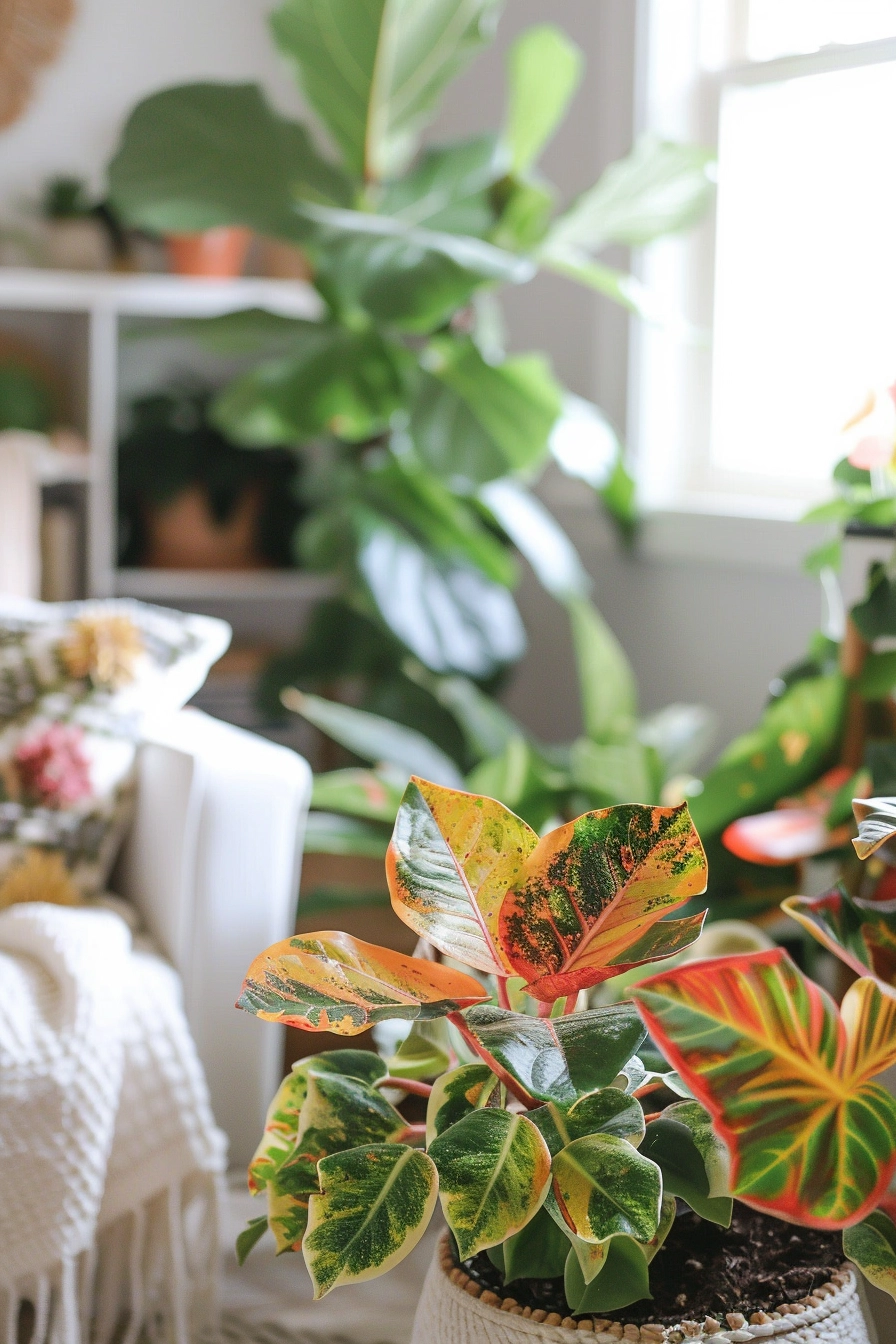Hello, plant enthusiasts! Today, I want to introduce you to the enchanting world of variegated houseplants. These plants, with their stunning variegated leaves, are a favorite among indoor gardening enthusiasts. Their unique patterns and colors add a touch of elegance to any space, making them a popular choice for plant lovers.
However, variegated houseplants require special care and cultivation techniques to maintain their vibrant foliage. Unlike their green leafed counterparts, these plants have a different gene sequence that removes chlorophyll, resulting in white or yellow tissue. This genetic variation makes them more susceptible to certain challenges and requires specific attention to ensure their health and vitality.
Key Takeaways:
- Variegated houseplants have unique patterns and colors on their leaves that make them visually appealing.
- These plants require special care and cultivation techniques due to their genetic variation.
- Providing adequate light, avoiding chemical fertilizers, and monitoring for pests are essential for the well-being of variegated houseplants.
- Variegated houseplants need at least 8 hours of bright, indirect sunlight per day to maintain their vibrant foliage.
- Choosing the right soil, watering consistently, and providing proper nutrients are crucial for the health of variegated houseplants.
The Importance of Light for Variegated Houseplants
Variegated houseplants have less chlorophyll compared to normal plants, making it crucial to provide them with ample light. These plants need at least 8 hours of bright, indirect sunlight a day to thrive. Placing them in a spot with sufficient light will help maintain the vibrant variegated patterns on their leaves. Insufficient light can cause the variegation to fade or disappear, and new leaves may emerge without the expected patterns. It is important to avoid direct sun exposure, as it can scorch the delicate leaves of variegated plants.

Caring for Variegated Houseplants: Soil, Watering, and Nutrients
Variegated houseplants require specific soil, watering, and nutrient conditions to thrive. Proper care and attention to these factors will ensure the health and beauty of your variegated plants.
Soil Needs
Variegated houseplants prefer well-drained soil to prevent issues like root rot. For plants grown in the ground, amend clay soils with organic material to improve drainage. If you are growing variegated houseplants in containers, use a high-quality potting mix that provides good drainage.
Watering Needs
When it comes to watering variegated houseplants, consistency is key. It is important to maintain consistent moisture in the soil without letting it completely dry out or become overly wet. Monitor the soil regularly and water when the top inch feels dry to the touch. Remember to adjust watering frequency based on factors such as the plant’s size, pot size, and environmental conditions.
Nutrient Needs
Variegated houseplants benefit from regular fertilization during the growing season to support their nutrient needs. Use a balanced and water-soluble fertilizer to provide the necessary nutrients. Additionally, incorporating micronutrients such as calcium, magnesium, and iron can help preserve the variegation in the leaves and promote overall plant health.
Proper soil, watering, and nutrient care are essential for the well-being of variegated houseplants. By addressing these needs, you can ensure your variegated plants thrive and continue to showcase their unique foliage patterns and colors.

Conclusion
Variegated plants are a delightful addition to any indoor space, offering a touch of uniqueness and visual appeal. To ensure their health and vibrancy, proper care is essential. By providing these plants with the right conditions, you can enjoy their stunning variegated foliage for years to come.
First and foremost, it is crucial to provide variegated plants with adequate light. They thrive in bright indirect sunlight, so placing them near a window with filtered light is ideal. Be cautious of direct sun exposure, as it can harm the delicate leaves.
Furthermore, providing variegated plants with well-drained soil is essential. Use a high-quality potting mix, or if planted in the ground, amend the soil with organic matter to ensure proper drainage. Consistency is key when it comes to watering variegated plants. Keep the soil evenly moist but avoid overwatering, as it can lead to root rot.
Last but not least, nourish your variegated plants with the right nutrients. During the growing season, feed them with a balanced and water-soluble fertilizer. Micronutrients such as calcium, magnesium, and iron can help maintain the variegated patterns in their leaves.
With adequate light, well-drained soil, consistent moisture, and proper nutrients, variegated plants can flourish and bring charm to your indoor environment. Keep an eye out for any signs of nutrient deficiencies or pests, and make adjustments as needed. By following this care guide for variegated plants, you can enjoy their beauty and create a thriving indoor garden.

